1. New York, NY

New York often shows off its skyline, endless amenities, and cultural prestige, but it carries massive debt burdens. According to reports, New York’s taxpayer burden—the share each taxpayer would hypothetically need to pay to settle all city obligations—is among the highest of major U.S. cities. Its unfunded pension and retiree health care promises are frequently flagged as structural risks. In short: it pretends to be invincible but leans heavily on future borrowing.
The city also recently expanded its borrowing capacity via new bond issues above its constitutional debt limits. Its debt service eats into a nontrivial share of tax revenues, limiting flexibility for new services. Despite that, officials promote ambitious capital projects and expansions as if cash flow is unlimited. The gap between there and the messy reality keeps growing.
2. Chicago, IL

Chicago presents itself as a hub of business and culture, yet it’s often cited for having one of the worst fiscal pictures of big U.S. cities. Each Chicago taxpayer reportedly shoulders tens of thousands of dollars in city debt. The city has also increased its net debt aggressively in the past decade. Many capital improvement plans are financed via debt rather than surplus.
Still, Chicago continues to promote big infrastructure projects, new transit ideas, and casinos as if the money isn’t a problem. But service cuts, pension shortfalls, and deferred maintenance tell a different story. Even credit agencies warn that the debt ratios and pension burden pose real risks. The city acts wealthy, but some corners are off the books.
3. Philadelphia, PA
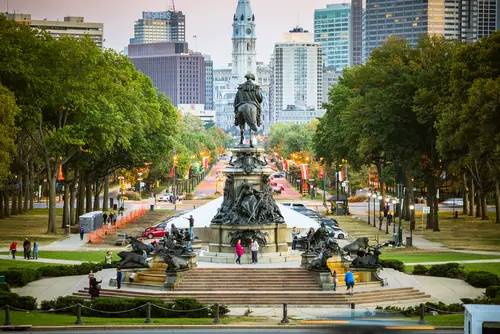
Philadelphia crafts an image of historic prosperity and urban revival, but the city also carries a heavy burden of unfunded liabilities. Its taxpayer burden ranks among the higher-end of large U.S. cities in recent reports. Pension obligations, legacy health care promises, and debt issuance to patch budget gaps all play a role. Some of its capital projects are backed by bonds rather than pay-as-you-go.
Yet you still see large-scale development schemes, branding efforts, and ambitious city planning as though finance is a mere backdrop. The contrast between flashy announcements and sagging fiscal flexibility is sharp. In many ways it’s a city trying to live ahead of its means.
4. Honolulu, HI

Honolulu markets itself as a tropical paradise and thriving tourist capital, but under the surface, it’s wrestling with fiscal stress. Its taxpayer burden is relatively high among U.S. cities, partly due to unfunded pension and retiree obligations. The cost of infrastructure upkeep on island terrain adds pressure. Debt issuance has been used to fund projects and balance earlier deficits.
Still, Honolulu keeps up appearances: new resorts, infrastructure plans, and urban promotion are frequent talking points. The city leans on growth narratives as if money constraints are a distant worry. But hidden liabilities are large and not easily visible to the casual visitor.
5. New Orleans, LA
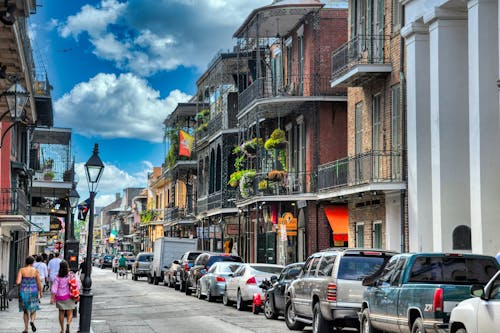
New Orleans has long cultivated an image of cultural glitter, tourism, and rebirth, even after disasters. Behind that, the city struggles with legacy fiscal problems: high pension obligations, debt, and cost of rebuilding infrastructure. Its taxpayer burden is elevated in many comparative reports. To keep up the illusion, local leaders continue pushing new development and tourism-related investments.
Meanwhile, many neighborhoods see deferred maintenance, service gaps, and tight margins in the budget. The contrast between the polished French Quarter and the worn infrastructure elsewhere is telling. New Orleans wears the mask of growth while carrying a heavy fiscal load.
6. Miami, FL

Miami projects opulence with beaches, high-rises, and global appeal, yet it’s not immune to financial strain. Its taxpayer burden is in the mid to high range for U.S. cities in some accounting treatments. Significant infrastructure demands (coastal defences, water systems) require borrowing. Miami’s municipal finances rely on issuing debt for large capital projects and repairs.
Nonetheless, city leaders still talk of bold visions, major new developments, and urban reinvention. The narrative is one of endless growth, not fiscal caution. Underneath, though, the balance between borrowing and sustainable revenue is tight.
7. Dallas, TX

Dallas presents itself as a booming business metropolis, full of swagger, but the financial foundations are under pressure. Dallas was flagged in recent analysis for having one of the worst taxpayer burdens in Texas. The city needed several billion dollars to cover all its bills in one recent period. Growth and image often mask the reality of borrowed capital and deferred obligations.
Dallas continues to push major infrastructure expansions and urban redevelopment projects. It keeps borrowing under the guise of “investment” rather than admitting fiscal strain. The result is a city that looks flush but has less cushion than it advertises.
8. Austin, TX
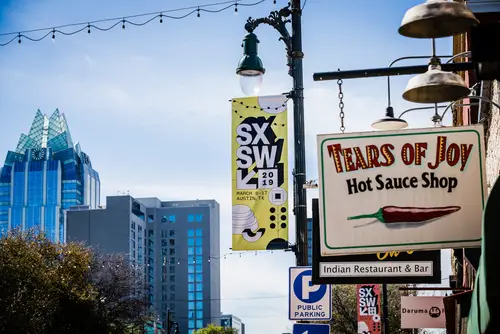
Austin styles itself as a tech‐savvy, fast-growing, creative capital, but it’s also wrestling with increasing financial demands. Its taxpayer burden has climbed in recent reports, meaning each taxpayer’s share of liabilities is nontrivial. The city finances lots of its aspirations (transport, parks, cultural amenities) via long-term debt. That spending adds up, especially when paired with unfunded pension or service obligations.
Yet Austin’s narrative seldom acknowledges the risks: it’s mostly about expansion, innovation, and “keeping the vibe.” That image of limitless potential distracts from the reality of fiscal limits and trade-offs.
9. Baltimore, MD
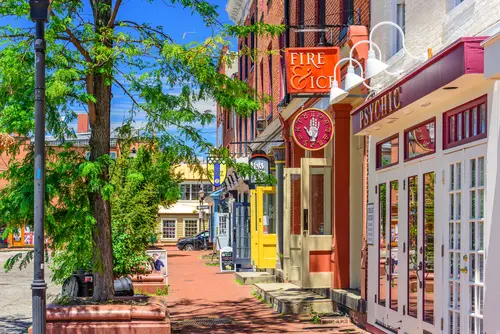
Baltimore projects itself as a resilient city with redevelopment momentum, but it also carries persistent structural financial challenges. Retirement obligations, legacy debts, and declining tax base in some neighborhoods weigh heavily on its books. Its taxpayer burden figures in comparative reports are in the higher tier. To keep going, the city often leans on debt issuance and borrowing maneuvers.
In public messaging, Baltimore still talks of revitalization, waterfront investments, and bright future plans. That encourages a veneer of growth, even as basic services and infrastructure demand repair. It’s a city trying to look strong while carrying serious burdens.
10. Kansas City, MO
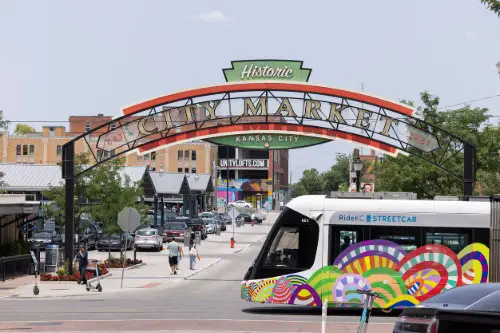
Kansas City markets a forward-looking urban renewal narrative, yet its fiscal report card is less sunny. Its taxpayer burden is significant, reflecting hidden liabilities and debt obligations. The city relies on debt to propel capital projects and maintenance. Some of the borrowing is meant to mask gaps in operating revenues.
Still, in announcements, the tone is one of optimism, expansion, and bold civic planning. The public-facing image is that of a city on the rise. But behind it lurk stresses in balancing books vs. borrowing.
11. Pittsburgh, PA

Pittsburgh showcases booming tech, arts, and urban rebirth, but it also contends with structural liabilities. Its taxpayer burden in reported accounting studies is nontrivial. The city has taken on debt for infrastructure, transit, and service expansion projects. In periods of tight revenues, debt is a go-to strategy rather than outright cuts.
Meanwhile, Pittsburgh sells itself as a transformed city post-industry, a success story in reinvention. That image sometimes overshadows the financial fragility in its balance sheet. A city trying to look prosperous while quietly borrowing.
12. Milwaukee, WI

Milwaukee portrays a revitalizing big-city feel, with new development and urban culture, yet its fiscal footing is shaky. Its taxpayer burden in comparative rankings is relatively high. It depends on debt for capital work and managing municipal obligations. The cost of maintaining aging infrastructure on less favorable tax basis adds stress.
Even so, Milwaukee continues projecting growth, urban appeal, and momentum. That helps gloss over the behind-the-scenes debt load. The city looks more flush than its balance sheet sometimes allows.
13. Memphis, TN
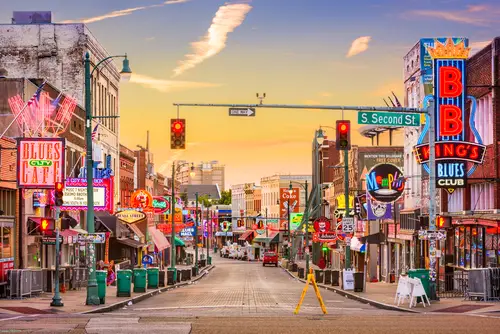
Memphis often leans into its cultural heritage, music, and gateway status, while wrestling with tight municipal finances. Its taxpayer burden is in the mid-to-upper range, meaning liabilities per taxpayer are notable. To keep up, it issues bonds and takes on debt for infrastructure and development projects. That borrowing becomes part of the routine rather than the exception.
But in its public image, Memphis pushes forward as though resources are ample: new projects, festivals, development zones. That narrative helps hide the trade-offs it’s forced to make behind the scenes. The façade is one of vitality over fragility.
14. Dallas suburb / exurban city (e.g. Plano, TX)

Some suburbs or exurbs that brand themselves as affluent (like Plano) also carry hidden debt burdens to support amenities, roads, parks, and municipal conveniences. In some years, they show taxpayer burden or debt levels in their municipal bonds or accounting disclosures. They borrow to build expensive infrastructure before the tax base fully catches up. The image is upscale neighborhoods, good schools, and low visible tax pain.
However, behind that, residents may indirectly be shouldering debt through fees or future tax increases. The municipalities act like they’re already big and wealthy, then back it up with borrowed capital. Over time, that can stress their finances if growth slows.
15. San Francisco, CA

San Francisco promotes itself as a global tech hub, fronted by wealth and investment. Yet its municipal finances are not without vulnerabilities. In recent accounting rankings, it has a taxpayer burden (i.e. liabilities per taxpayer) in a concerning range. The city issues debt and uses long-term obligations to fund transportation, housing subsidies, and infrastructure.
Between rising pension costs, volatile revenues, and capital demands, San Francisco’s finances can wobble despite the glamorous image. Still, the city never stops portraying itself as a high-value, forward-momentum place. The contrast is subtle but real.
16. Des Moines, IA

Des Moines ranks lower on sheer glamour than some others, but it’s increasingly borrowing heavily while painting itself as an up-and-coming Midwest capital. Its municipal debt recently climbed toward record levels, partly due to large capital projects (especially dealing with infrastructure, drainage, sewer) under federal mandates. The debt growth (e.g. a 76% climb over a decade) is striking for a city of its size. Yet Des Moines continues branding itself as a finance, tech, and quality-of-life winner.
Because many won’t expect it, it’s a good example: a modest city that tries to act larger and more robust while absorbing debt quietly. That tension between outward ambition and inward strain makes it a fitting closer on your list.
This post 16 U.S. Cities That Pretend to Be Wealthy But Run on Debt was first published on American Charm.


